Home> Company News> Effect of microwave treatment on the quality of Artifical/Nutritional rice process line
- AddressNo.4087 SHAHEXI ROAD, TIAOQIAO DISTRICT,JINAN,CHINA
- Factory AddressNo.4087 SHAHEXI ROAD, TIAOQIAO DISTRICT,JINAN,CHINA
- Worktime9:00-18:00
- Phone(Working Time)0531-85064681
- Phone(Nonworking Time)86-18660125156
- Fax0531-85064682
Effect of microwave treatment on the quality of Artifical/Nutritional rice process line
2018-10-16 17:22:34Effect of microwave treatment on the quality of Artifical/Nutritional rice process line
Abstract: The effects of microwave treatment temperature and power on the quality of microwave drying equipment for artificial/nutritive rice with different moisture content were studied by orthogonal test table. The results showed that the total amount of broken rice, chalky rice percentage, yellow rice and taste score did not change significantly, amylose content showed significant changes, fatty acid value and water content decreased significantly in the range of 47 ~ 65 C microwave treatment. Microwave technology should be further improved. Key words: Microwave insecticidal; indica rice; quality index; moisture content
Effect of microwave conditions on the quality of milled long-grain nonglutinous long-grain
DENG Shu-hua1, WU Shu-hui1, YANG Chao2, ZHANG Xiao-yan1
(1 Hunan Provincial Cereal and Oil Quality Monitoring Station, Changsha 410201, Hunan, China; 2 Changsha Synotherm Corportion, Changsha 410126, Hunan, China)
Abstract: Orthogonal experiment was designed to research effects of quality microwave temperature and power on the quality of milled long-grain non-glutinous rice under different moisture.The results showed that broken rice, rate of chalky rice.yellow colored rice, and sensory evaluation score wer The amylose content was significant change. The fatty acid value and content of moisture were significant decreased. Hence, microwave technology is needed to be further improved.
Key words: microwave insecticide; milled long-grain nonglutinous rice; quality index; moisture
Microwave drying machinery and equipment is a kind of high frequency electromagnetic wave with frequency of 300 MHz~300 GHz. It has strong penetration and can kill pests in grain efficiently. It has the advantages of non-pollution and fast processing speed. It is a potential green pest control method and has been widely used in nuts, coffee, fruits and other fields. And achieved good results. In recent years, the use of microwave to solve the problem of pests in the storage and circulation of packaged rice has become a research hotspot in the industry. Because of the characteristics of rice as a staple food, we should pay more attention to the effect of microwave treatment on rice quality while studying the insecticidal effect of microwave. It was reported that the moisture content, amylose content, protein content, broken rice rate, imperfection rate, yellow grain rate, chalky grain rate, chalkiness degree and length-width ratio of Japonica Rice Treated by certain dosage of microwave had no significant change, and fatty acid value decreased significantly.
1.
Evaluation index of experimental analysis. The main quality indicators were water content, total broken rice, yellow rice, chalky rice percentage, amylose content, taste score, color, smell and fatty acid value. Through the significance analysis, the index of microwave treatment on the quality of rice was selected.
(1) microwave treatment
In the production line, the thickness of rice in the scraper is about 5 cm. Therefore, in the laboratory experiment, the bottom layer of the grain sieve with 1 kg thickness of about 5 cm is used as the rice container, and the rice is treated under different microwave conditions. When the temperature reaches the set temperature, microwave treatment is stopped immediately. Because of the microwave penetration, the temperature difference between the surface and the bottom of rice is about 3 C. Therefore, the temperature of the middle layer of rice is taken as the test temperature, and the fiber-optic thermometer is fixed in the middle layer of rice to detect the microwave treatment temperature.
(2) detection method
Moisture: GB 5009.3-2016 "National Food Safety Standard Food Moisture Determination"; Total amount of broken rice: GB/T5503-2009 "Grain and oil inspection broken rice inspection method"; Chalky grain rate: GB/T 17891-1999 "Quality rice"; Yellow grain rice: GB 5496-1985 "Food and oil inspection yellow grain and cracked grain inspection method" (3) amylose content: GB/T 15683-2008 "Determination of amylose content in rice"; Tasting score: GB/T 15682-2008 "Sensory evaluation method for inspection of cooking and eating quality of cereals and oils"; Color and odor: GB/T 5492-2008 "Identification of color, smell and taste of cereals and oils"; Fatty acid value: GB 5510 - 2011 "determination of fatty acid value in grain and oilseeds".
(3) data processing method
Variance analysis was performed using DPS data processing software. The test was divided into two groups. The group with 14.0% moisture for sample was called group A, and the group with 15.0% moisture for sample was called group B.
Two.
(1) test results
Because the millet was not detected before and after microwave treatment, and the color and odor were normal, the millet percentage and color and odor were not used as the analysis index in the positive test. The other indexes of group A and group B were analyzed by ANOVA. The results showed that P (total broken rice), P (chalky rice rate), P (yellow rice) and P (taste score value) were all greater than 0.05, P (water), P (amylose content) and P (fatty acid value) were less than 0.05. The results showed that there were differences in the results of water content, amylose content and fatty acid value. Therefore, water content, amylose content and fatty acid value were selected as orthogonal test indexes.
(2) amylose content
The amylose content of samples treated by microwave was higher or lower in groups A and B, but there was no obvious regularity. After treatment, the amylose content of the samples was between 14% and 24%, which accorded with GB / T 1354 - 2009. Therefore, amylose content was not analyzed by orthogonal test.Regulation of amylose content in high quality rice. Therefore, amylose content is not used as the analysis index of orthogonal test, but the mechanism of microwave on amylose content in rice still needs further study.
(3) water
Taking the water loss as the analysis index of orthogonal experiment, the corresponding intuitive analysis is made. All samples showed varying degrees of moisture loss. When the treatment temperature was 59 ~ 65, the moisture loss of the samples was as high as 0.4% ~ 0.6%. From the range R, the effects of various factors on water loss of tested rice were temperature, power and moisture in turn, and the effects of moisture content of tested rice were almost zero. The results showed that the higher the temperature was, the greater the loss of water was.
(4) visual analysis table of fatty acid value orthogonal test
Taking the decrease of fatty acid value as another index of orthogonal test, the corresponding visual analysis was made. The fatty acid value of rice treated with microwave treatment decreased to varying degrees. According to the extreme R, the effects of various factors on fatty acid value of rice were temperature, moisture and power in turn. The results showed that microwave treatment could reduce the fatty acid value of rice in the range of 47 ~ 65 C. Temperature was the main factor affecting the fatty acid value.
Three. Conclusion
The results showed that the total amount of broken rice, amylose content, yellow grain rice, taste score and chalky grain rate were not significa changed in the range of microwave temperature from 47 to 65 C. The fatty acid value decreased significantly, which was conducive to improving the quality of rice, but the water loss was large. Therefore, in the development of microwave equipment for pest control of rice, the effect of moisture loss caused by microwave treatment on the application of microwave technology should be fully considered, and corresponding technical measures should be taken to ensure that rice does not cause new and greater losses due to microwave pest control.
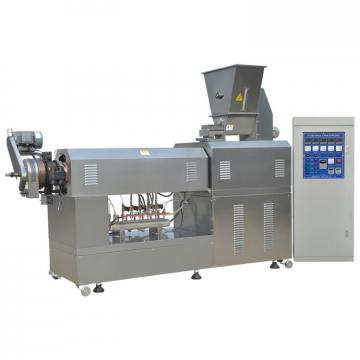 Factory Fruit and Vegetable Processing Machines/Quick Frozen Line/Food Processing Production Line for Daylily Production Line with High Output
Factory Fruit and Vegetable Processing Machines/Quick Frozen Line/Food Processing Production Line for Daylily Production Line with High Output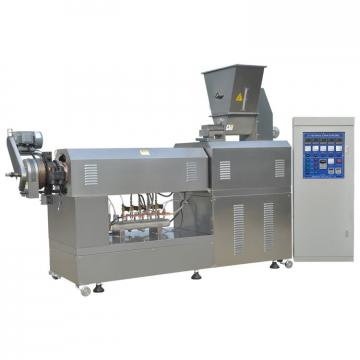 Factory Direct Sales PS Styrofoam Food Container Production Line
Factory Direct Sales PS Styrofoam Food Container Production Line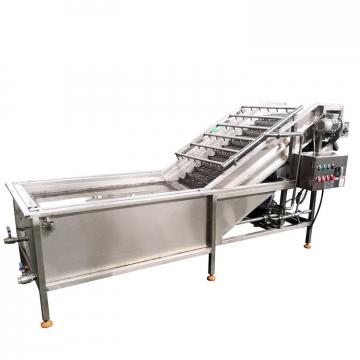 Complete Pure / Mineral Drinking Bottled Water Production Line Factory in Beverage / Food Area
Complete Pure / Mineral Drinking Bottled Water Production Line Factory in Beverage / Food Area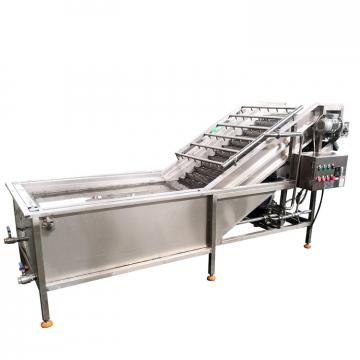 Cheetos Fried Food Production Factory Extruder Processing Line
Cheetos Fried Food Production Factory Extruder Processing Line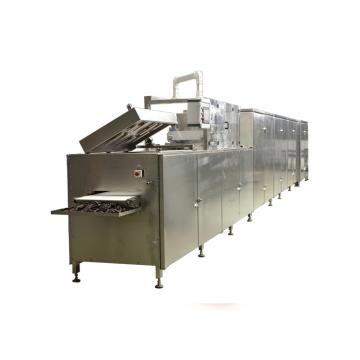 Automatic Mini Food Factory Macaroni Processing Line Pasta Production Line
Automatic Mini Food Factory Macaroni Processing Line Pasta Production Line
